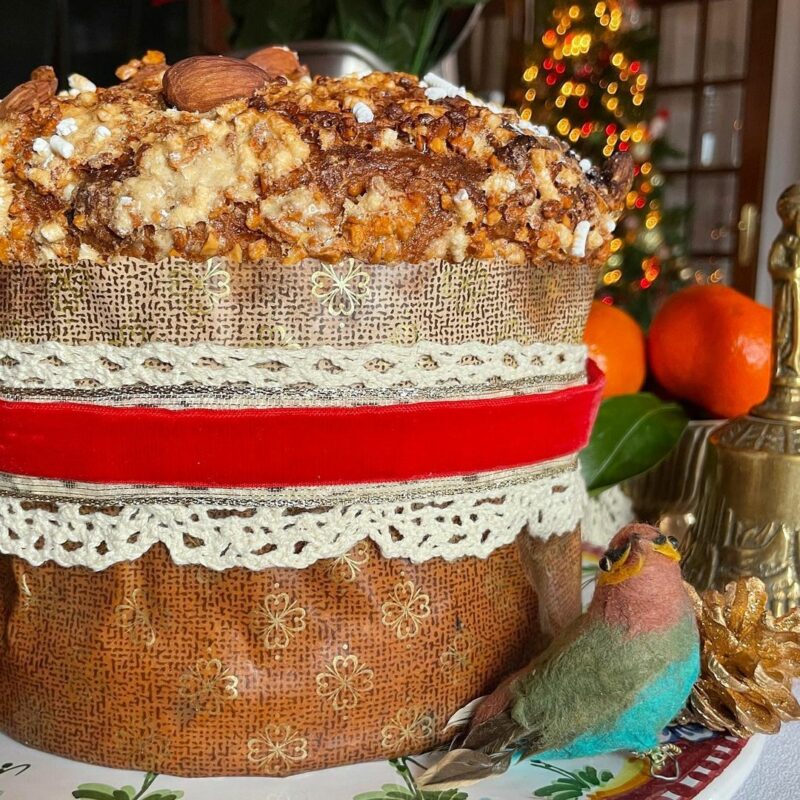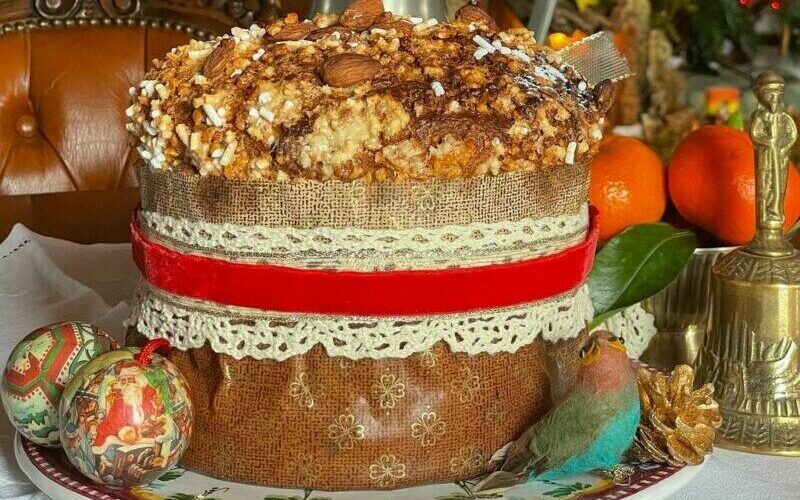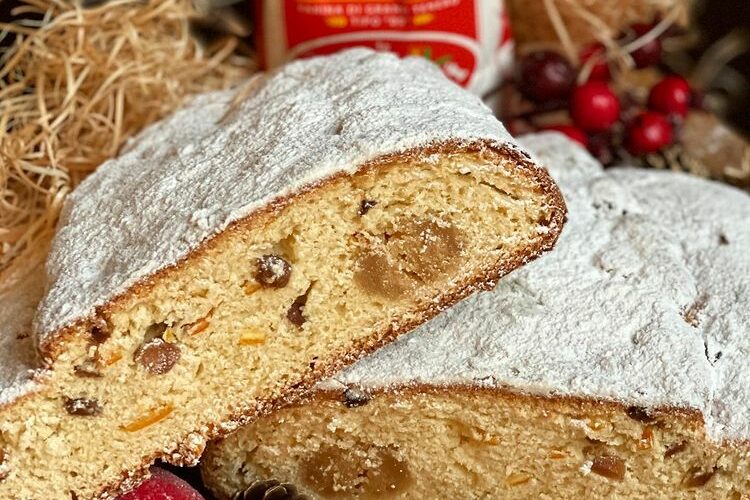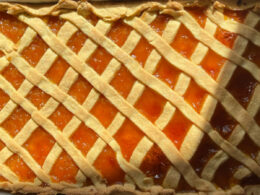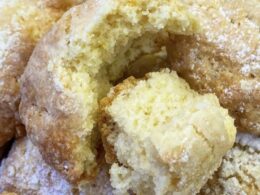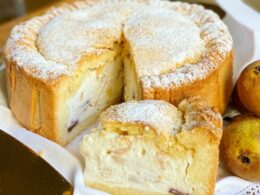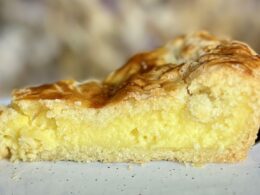In my previous posts, I have already written about “panettone.” And since the Christmas holidays are just around the corner, and half of my family is Catholic, let’s start an experiment. As you already know, I love baking with sourdough, so it was important for me to find a good recipe using this particular sourdough ingredient. My choice fell on the recipe for the most famous and delicious panettone in Italy – Igino Massari’s! I want to warn you right away that the process is not easy, and the outcome is uncertain. However, based on my own experience, the recipe turned out exceptionally well!
I will write it step by step, as the process is lengthy. It will take you about two days just to prepare the “panettone.” But before moving on to the preparation of the panettone itself, you need to prepare the sourdough. The sourdough needs to gain strength, so you will need to refresh it daily for 3 days! IMPORTANT!
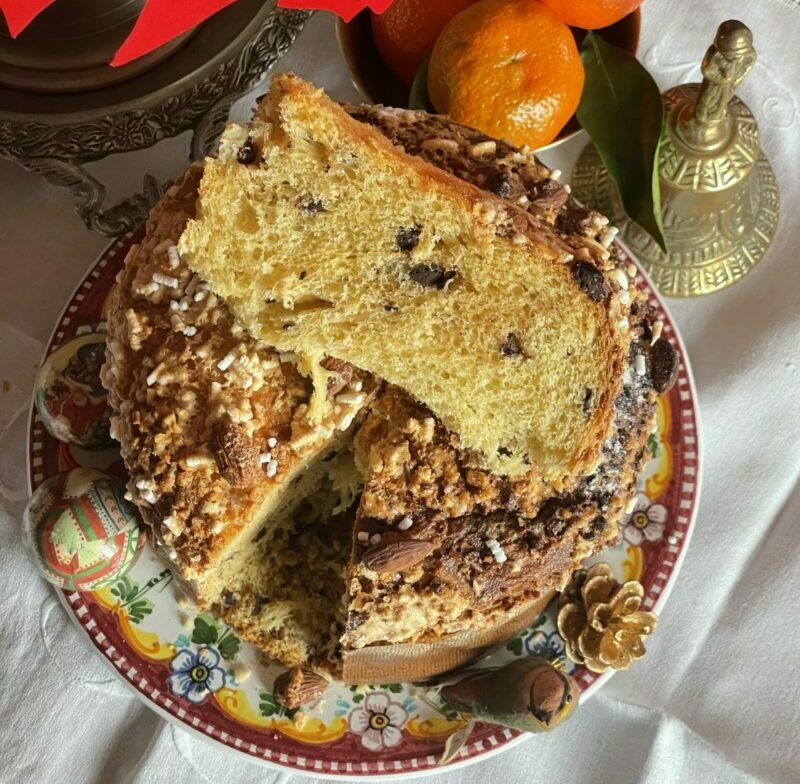
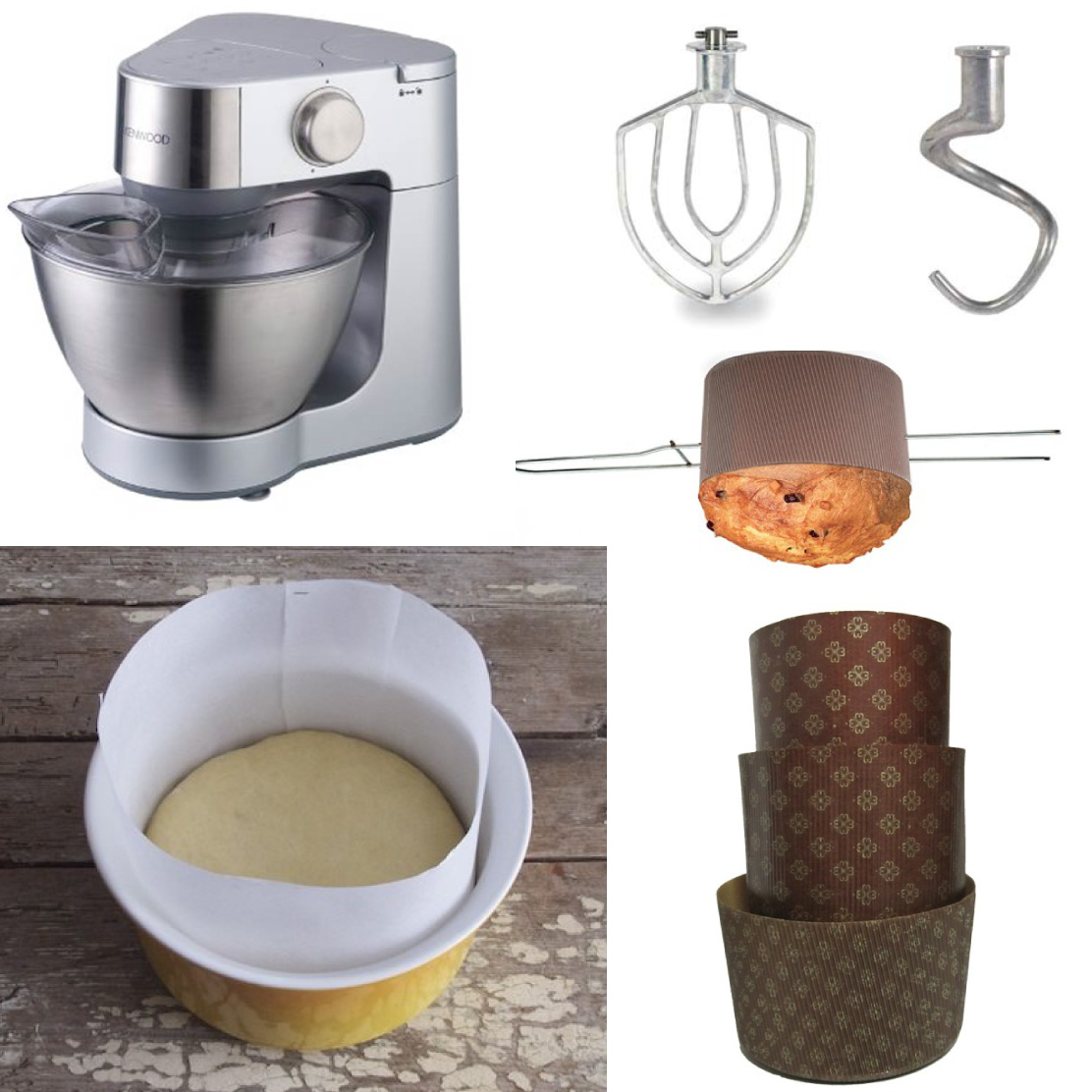
Let’s begin:
Sourdough refreshment after a three-day refreshment:
Day 1 – 9:00 AM:
First refreshment: Mix 100g of sourdough with 100g of flour and 40g of water. Towards the end, add another 10g of water and let it rest for 3 hours at a temperature of 29°/30°.
Day 1 – 12:30 PM:
Second refreshment: Take 100g of sourdough from the first batch and mix it with 100g of flour and 40g of water. Towards the end, add another 10g of water and let it rest for 3 hours at a temperature of 29°/30°.
Day 1 – 4:00 PM:
Third refreshment: Take 250g of the last sourdough, mix it with 250g of flour and 125g of water. From this quantity, you will only need 100g of sourdough. You can use the rest for other baking. Like the previous sourdough, set aside 100g of sourdough for 3 hours at a temperature of 29°/30°.
Day 1 – 7:30 PM: Preparing the first dough.
⭐️⭐️⭐️Notes⭐️⭐️⭐️
Before preparing the first dough, your sourdough should have tripled in size. If this did not happen, the sourdough is not ready for dough preparation. Pay attention to the scent of the sourdough. It should smell like bread and not have a sour odor. If there is a sour smell, it is better not to proceed to the next stage. During the preparation of the sourdough and the dough, I recommend using the oven with the light on, but be mindful of the temperature. If the temperature exceeds 30°C, turn off the light for a while and continue monitoring the temperature.
Ingredients:
First Dough
- 60g sourdough
- 75g sugar
- 90g water
- 60g egg yolks
- 85g unsalted butter
- 240g flour (Italian Manitoba flour; you can replace it with all-purpose flour, but the result may slightly differ)
Aromatic Mixture
- 15g honey
- Zest of 1 orange
- Zest of 1 lemon
- Vanilla extract
Second Dough
- Prepared first dough
- 60g flour (Manitoba or all-purpose)
- 4g salt
- 60g sugar
- 80g egg yolks
- 90g unsalted butter
- 40g water
- 120g raisins
- 60g candied orange peel
- 30g candied fruits
- Aromatic mixture (15g honey + zest of 1 orange + zest of 1 lemon + vanilla extract)
First Dough
- Beat the egg yolks with sugar until creamy. (Set aside)
- Divide the sourdough into pieces and place them in the dough mixer. Add 90g water and use the beater attachment to start mixing the dough. Later, you will switch to the hook attachment. Start at low speed, and as the sourdough mixes with water, gradually add the flour. (The sourdough should almost dissolve in the water.)
- Begin adding the previously beaten eggs gradually, not all at once. Add them tablespoon by tablespoon, ensuring each spoonful incorporates well into the dough. Knead the dough until it reaches a gluten network (elastic consistency).
- Now, attach the dough hook to your dough mixer. Gradually add the unsalted butter. Increase from low to medium speed. The entire kneading process should take about 40 minutes or even more. Be patient!
- Let the dough rise for approximately 12-14 hours at a temperature of 26°C. It should increase and double in volume. I recommend marking the initial level of the dough to make it easier to monitor its rise! If needed, let the dough rise for 16 hours!
- On the same day, prepare the aromatic mixture and store it in the refrigerator overnight for it to infuse.
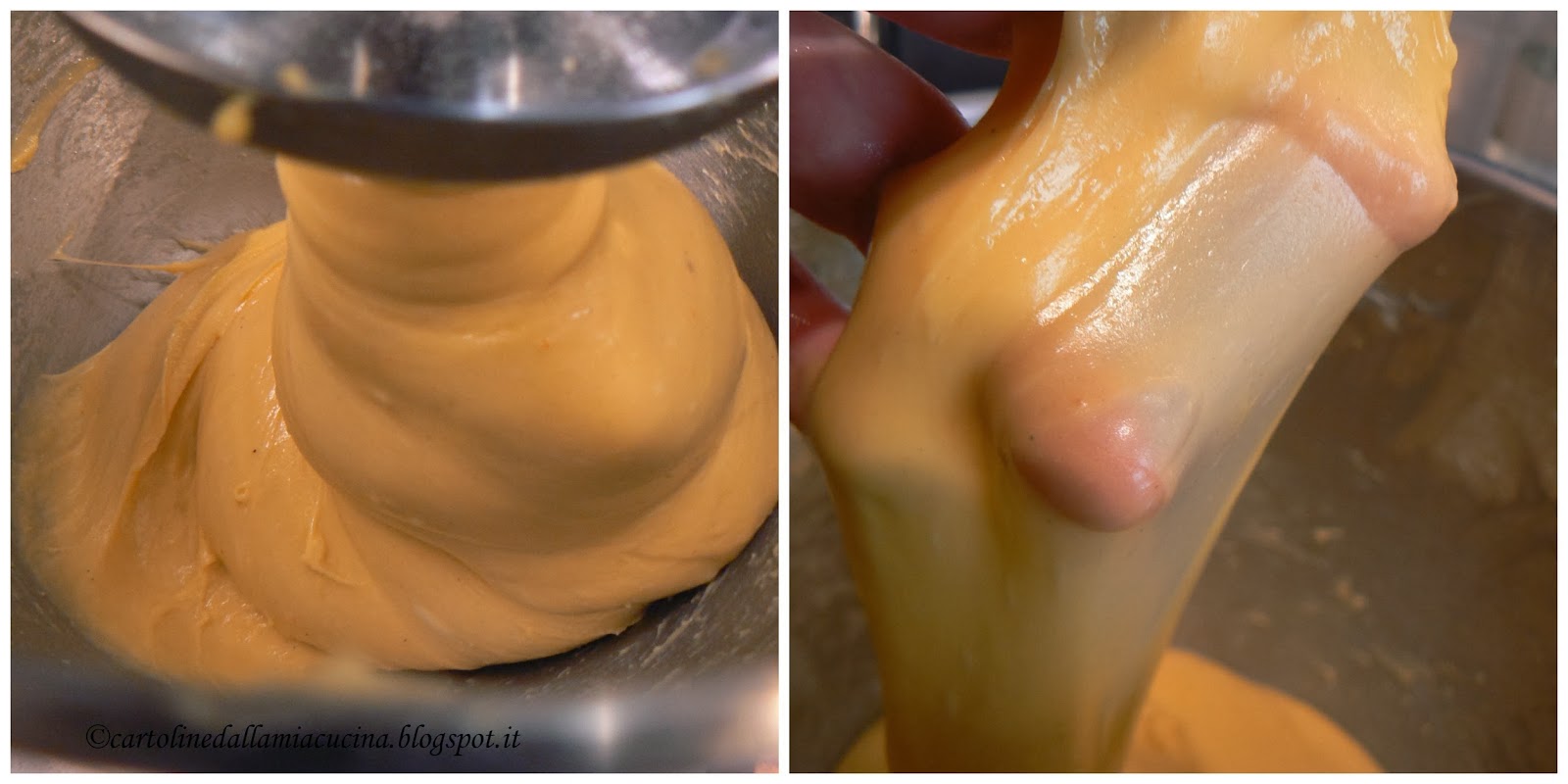
Second Dough
- Beat the egg yolks with sugar as in the first dough. (Set aside.)
- Put the first dough into the dough mixer with flour and the honey-aromatic mixture. (Use the hook attachment.)
- Add the egg yolks as in the first dough, tablespoon by tablespoon.
- Once the dough is well-kneaded, add water mixed with salt. !!!This moment is very delicate!! Add water in small doses. It will be absorbed with difficulty, so be patient! Never add all the water at once! The amount of water also depends on the flour! Each flour absorbs differently!
- When the dough is well-threaded, and the gluten network is well-formed and evident, add softened butter and dried fruits.
- Now, lightly butter the dough on the work surface and leave it for 1 hour.
- Start kneading the dough using the “pirlatura” method. Look at this website for how it is done.
- Leave it for 20 minutes and repeat “pirlatura”!
- Now place the dough in the baking mold.
- Your panettone should stand for another 6 hours at a temperature of 28°C (not exceeding 30°C). You can place the panettone in the oven with the light on. Also, place a container with boiling water in the oven to humidify your panettone. Change the water periodically, heating it.
- Once your panettone has risen, leaving only a few centimeters to the edge of your mold, remove it from the oven and leave it at room temperature for another 15 minutes. This is necessary for it to dry. Choose it very carefully, without destroying the formed air structure in the dough!
- During this time, preheat the oven to 170°C (without ventilation)!
- After 15 minutes, make a cross-shaped cut on the top of your panettone and place a piece of butter in the middle.
- Put the panettone in the preheated oven for 60-65 minutes. You can also measure the internal temperature of the panettone, and it should not exceed 90/92°C. The temperature is measured almost at the end of baking. Do not open the oven in the first 30 minutes of baking. If the panettone starts to darken, cover the surface with foil and continue baking.
- Once your panettone is ready, you need to hang it upside down for 10 hours. I advise you to take knitting needles, pierce the panettone on both sides, and hang it somewhere in the apartment. You can use a tall pot, books, chairs. I personally placed two chairs and hung it between them.
- Once your panettone has cooled, put it in a plastic bag and seal it tightly. Let your panettone sit for half a day. If it works out))) Good luck! ?
